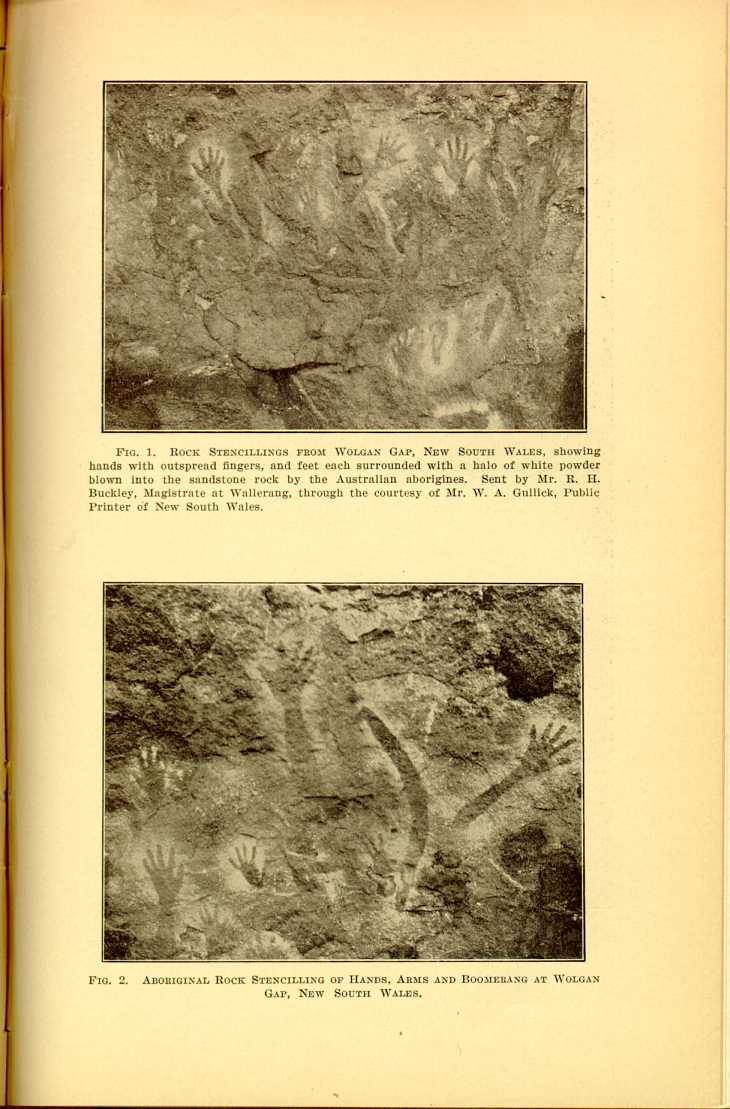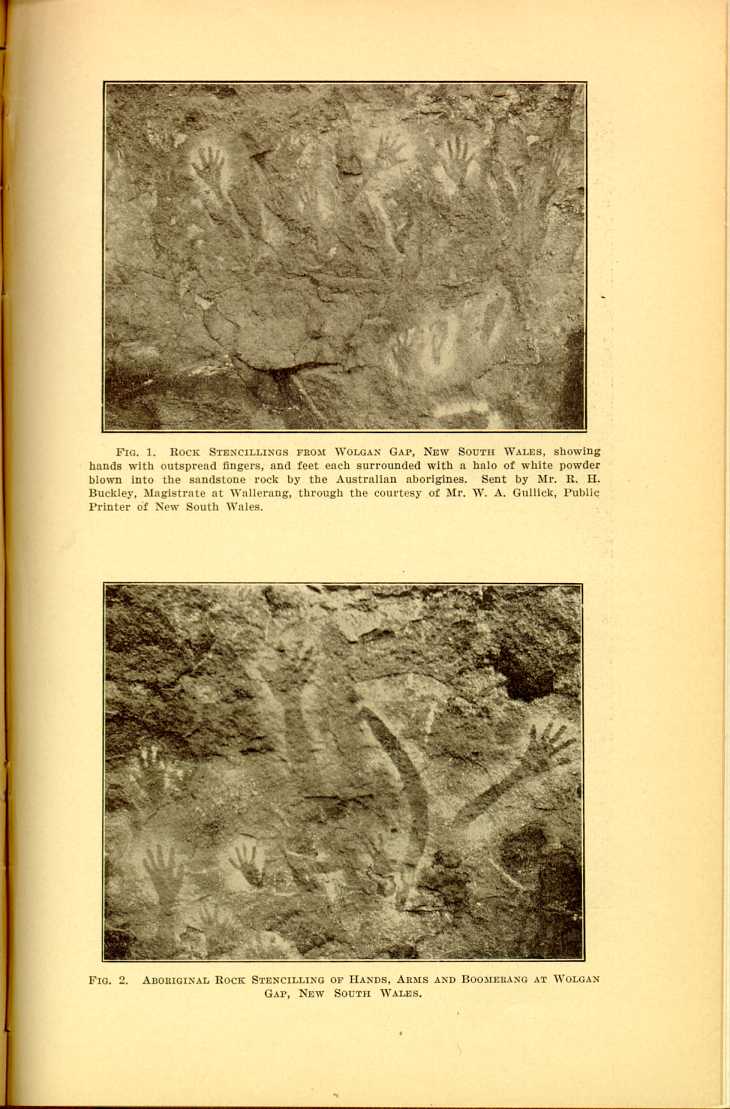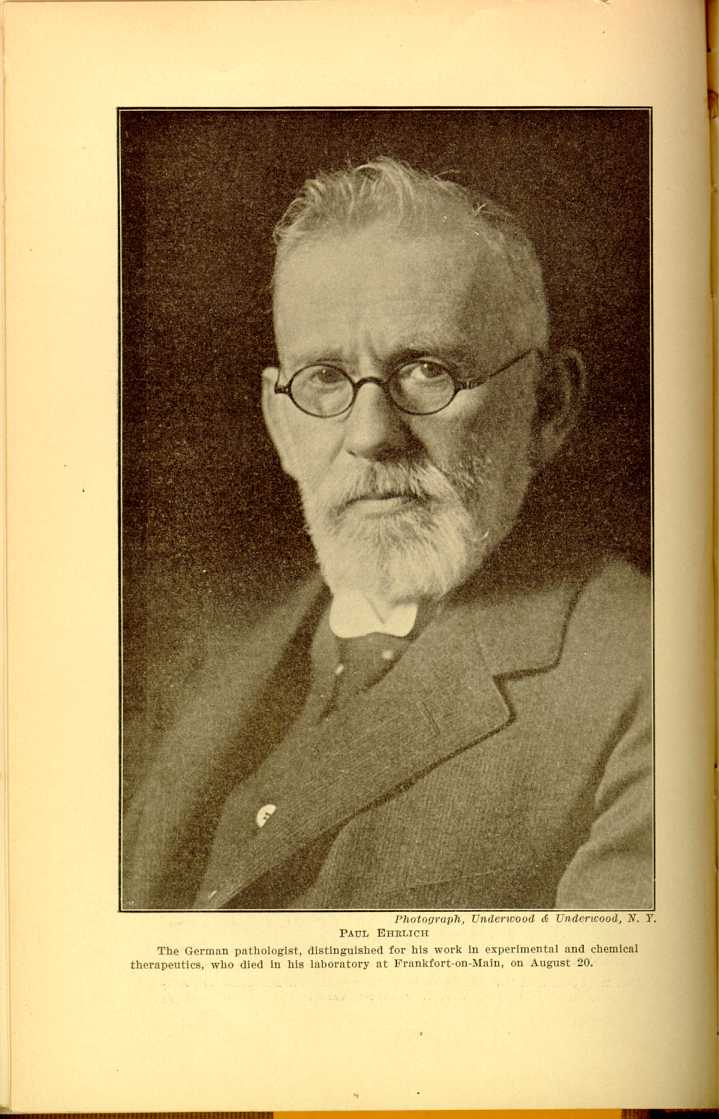THE ABORIGINAL ROCK-STENCILLINGS OF NEW SOUTH
WALES
BY DR. CHAS. B. DAVENPORT
COLD SPRING HARBOR, N. Y.
IN a number of places in eastern Australia curious aboriginal markings
are found on the faces of the sandstone cliffs. A good idea of
them is given by the photographs. These came from Wolgan Gap near
Wallerang in the Blue Mountain region of New South Wales. They
are found on overhanging rocks that have served as shelters or camping
places for the aborigines and which doubtless have protected their
works of art.
These stencillings are made by a sort of spatter work, something
like that in vogue a generation ago in this country, using leaves, etc., as
forms. The rocks at Wolgan Gap are a coarse sandstone stained
almost black by an iron oxide derived from included bands of ironstone.
These black surfaces were selected by the artists. Near-by in the rock
is a band of shale which had disintegrated at its exposed edge to a white
powder. The native artist put some of this white powder in his mouth,
placed his hand or foot upon the rock, and blew the moistened powder
upon and around his outstretched fingers or toes. When he removed
them they were outlined on the rock. Since the sandstone is coarse
and deeply pitted, the moist powder was blown into minute cavities
where it has remained despite the erosive activities of some generations.
The presence of the powder is shown on the photographs as a sort of
halo around the object. The hands are either right or left, and, in
some cases, both hands seem to have been stencilled at once. Sometimes
the whole arm and hand are stencilled together, and in one of
the photographs a boomerang is shown. The age of these stencils is
not known. They were first discovered at Wolgan Gap about sixty
years ago, but others have been known for a longer time, for instance,
those at Greenwich, Parametta River, near Sydney.
The significance of these stencillings has been the subject of some
controversy. The natives may have been induced to make them as boys
carve their names on benches or even rocks. The materials for making
the stencillings were present and, the example once having been set,
others would emulate it. It is interesting that similar stencillings of
the hands were made by cave men on the walls of some of the European
caves, as, for instance, those of Aurignac in southern France. Evidently
spatter work is no modern pastime.


